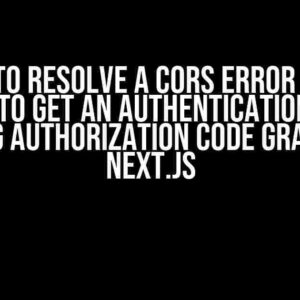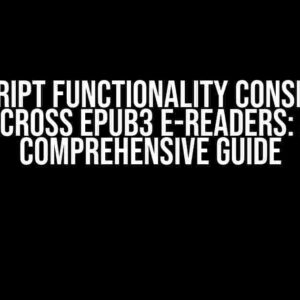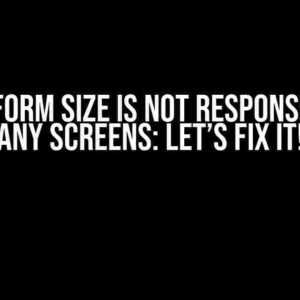If you’re a developer working with plugins, you know how crucial it is to keep your code organized and easily understandable. One of the most effective ways to achieve this is by using annotations. In this article, we’ll dive deep into the world of plugin annotations, specifically focusing on line and tags/labels with plugin-annotation@3. Buckle up, because we’re about to explore the ins and outs of this powerful tool!
What is Plugin-Annotation@3?
The plugin-annotation@3 is a JavaScript plugin that allows you to add metadata to your code in the form of annotations. These annotations can be used to provide additional information about your code, making it easier for others (and yourself!) to understand. With plugin-annotation@3, you can add line and tags/labels to your code, which we’ll discuss in detail later.
Why Use Plugin-Annotation@3?
- Improved Code Readability**: Annotations provide a clear and concise way to explain complex code, making it easier for others to understand.
- Efficient Code Maintenance**: With annotations, you can quickly identify areas of your code that need attention, making maintenance a breeze.
- Enhanced Collaboration**: Annotations facilitate collaboration by providing a common language and understanding among team members.
Line Annotations with Plugin-Annotation@3
Line annotations are used to add metadata to a specific line of code. This can include information such as the purpose of the line, any dependencies, or potential issues. With plugin-annotation@3, you can add line annotations using the following syntax:
//@line [annotation]For example:
//@line This line calculates the average score
let averageScore = scores.reduce((a, b) => a + b, 0) / scores.length;Types of Line Annotations
Plugin-annotation@3 supports several types of line annotations, including:
- Description**: A brief description of the line of code.
- Dependency**: Indicates that the line depends on another piece of code or external resource.
- Warning**: Highlights potential issues or areas for improvement.
- Note**: Adds a general note or comment about the line of code.
Tags/Labels with Plugin-Annotation@3
Tags/labels are used to categorize and group related code elements. With plugin-annotation@3, you can add tags/labels to your code using the following syntax:
//@tag [tag-name]For example:
//@tag feature/new-login-system
function login(username, password) {
// login logic
}Types of Tags/Labels
Plugin-annotation@3 supports several types of tags/labels, including:
- Feature**: Indicates that the code is related to a specific feature.
- Fix**: Identifies code that fixes a specific issue or bug.
- Todo**: Marks code that needs to be completed or updated.
- Deprecated**: Indicates that the code is no longer supported or recommended.
Best Practices for Using Plugin-Annotation@3
To get the most out of plugin-annotation@3, follow these best practices:
- Be Consistent**: Use a consistent annotation style throughout your codebase.
- Keep it Brief**: Keep your annotations concise and to the point.
- Use Clear Language**: Use clear and descriptive language in your annotations.
- Use Annotations Judiciously**: Only add annotations where necessary, to avoid cluttering your code.
Integrating Plugin-Annotation@3 with Your Workflow
Integrating plugin-annotation@3 with your workflow is relatively straightforward. Here are the steps:
| Step | Description |
|---|---|
| 1 | Install plugin-annotation@3 using npm or yarn. |
| 2 | Import the plugin in your JavaScript file. |
| 3 | Use the plugin’s API to add annotations to your code. |
| 4 | Configure your IDE or code editor to recognize plugin-annotation@3 syntax. |
Conclusion
In this comprehensive guide, we’ve covered the ins and outs of plugin-annotation@3, including line and tags/labels. By following best practices and integrating plugin-annotation@3 with your workflow, you can take your code organization to the next level. Remember, annotations are a powerful tool for making your code more readable, maintainable, and collaborative. So, start annotating today and take your coding skills to new heights!
Need more information on plugin-annotation@3 or have questions about implementing annotations in your code? Check out the official documentation or reach out to the developer community for support.
Here are 5 Questions and Answers about “line and tags/labels with plugin-annotation@3” in a creative voice and tone:
Frequently Asked Questions
Get the scoop on line and tags/labels with plugin-annotation@3!
What is the purpose of plugin-annotation@3?
Plugin-annotation@3 is a game-changer for annotating lines and adding tags or labels! It allows you to highlight important information, add context, and make your data more organized and searchable.
How do I create a new tag or label with plugin-annotation@3?
Easy peasy! To create a new tag or label, simply click on the “Add Annotation” button, type in your new tag or label, and hit enter. You can also choose from a list of existing tags or labels if you’ve already created them.
Can I customize the appearance of my tags or labels with plugin-annotation@3?
Absolutely! With plugin-annotation@3, you can customize the appearance of your tags or labels by adjusting the font, color, and style to fit your brand or personal preference.
How do I delete a tag or label with plugin-annotation@3?
No problem! To delete a tag or label, simply hover over the tag or label and click the “X” icon that appears. Confirm that you want to delete it, and it’ll be gone in a flash!
Can I export my annotated data with plugin-annotation@3?
You bet! With plugin-annotation@3, you can easily export your annotated data in various formats, including CSV, JSON, or PDF, making it easy to share or analyze your data further.









